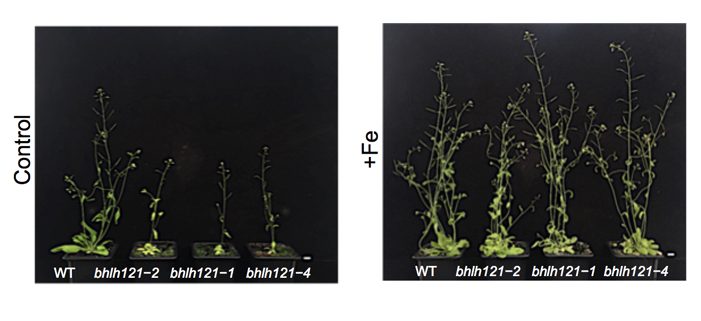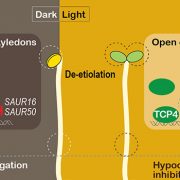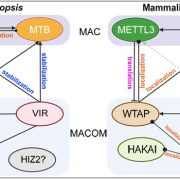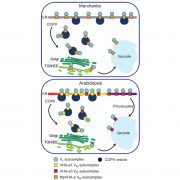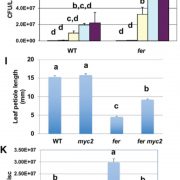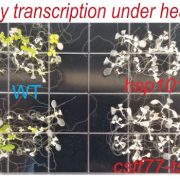A Key Upstream Regulator of the Iron Homeostasis Regulatory Network
Gao et al. identify a transcription factor that regulates the expression of the large majority of genes involved in the iron homeostasis regulatory cascade. Plant Cell https://doi.org/10.1105/tpc.19.00541
By Fei Gao, Florence Vignols, and Christian Dubos
BPMP, Univ Montpellier, CNRS, INRA, SupAgro, Montpellier, France
Background: Iron (Fe) is an essential micronutrient for plant growth and development since it is required for the activity of several enzymes involved in fundamental processes such as photosynthesis and respiration. The availability of this micronutrient for plants depends on the nature of the soil and the plant’s ability to take it up. In order to avoid any deficiency or excess that could be detrimental, plants have evolved sophisticated molecular mechanisms to maintain Fe homeostasis. A cascade of transcription factors (TFs) controls this process by regulating the expression of genes involved in Fe uptake, transport, and storage. Understanding how this regulatory cascade is regulated might help improve food crop production without the use of Fe fertilizers, as these fertilizers are expensive and their sustainability in modern agriculture is questionable.
Question: Iron homeostasis in plants involves the activities of several TFs, but how these activities are coordinated remains a key question. As we already identify ILR3 as a TF that plays a critical role in the maintenance of Fe homeostasis in Arabidopsis thaliana, we used ILR3 as a target to reveal novel key players that participate in this process.
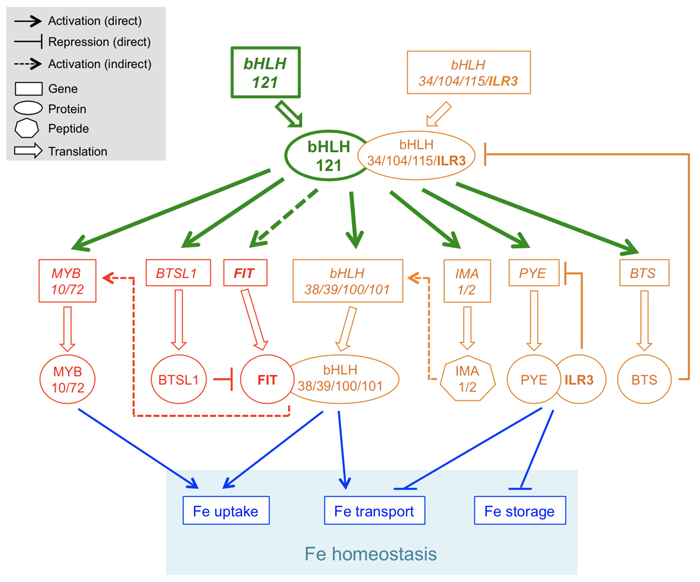 Findings: The bHLH121 TF interacts with ILR3 and its closet homologs. bhlh121 loss-of-function mutants display severe Fe homeostasis defects that can be reverted by exogenous Fe supply, either in vitro or in soil. Importantly, bHLH121 acts upstream of the Fe homeostasis regulatory network by directly regulating the expression of genes encoding most TFs and associated regulatory proteins/peptides involved in this process. Finally, Fe availability does not modulate bHLH121 expression but instead affects its protein localization within the root tissues.
Findings: The bHLH121 TF interacts with ILR3 and its closet homologs. bhlh121 loss-of-function mutants display severe Fe homeostasis defects that can be reverted by exogenous Fe supply, either in vitro or in soil. Importantly, bHLH121 acts upstream of the Fe homeostasis regulatory network by directly regulating the expression of genes encoding most TFs and associated regulatory proteins/peptides involved in this process. Finally, Fe availability does not modulate bHLH121 expression but instead affects its protein localization within the root tissues.
Next Steps: We proposed a model for the Fe homeostasis regulatory network. The validation of this model will require us to document how Fe availability affects the spatial distribution of bHLH121 together with the various actors involved in this regulatory network. Another important question to be addressed is how bHLH121 is regulated at the post-transcriptional and/or at post-translational levels.
Fei Gao, Kevin Robe, Mathilde Bettembourg, Nathalia Navarro, Valérie Rofidal, Véronique Santoni, Frédéric Gaymard, Florence Vignols, Hannetz Roschzttardtz, Esther Izquierdo, Christian Dubos (2020). The Transcription Factor bHLH121 Interacts with bHLH105 (ILR3) and its Closest Homologs to Regulate Iron Homeostasis in Arabidopsis. Plant Cell 31:xx. https://doi.org/10.1105/tpc.19.00541.
Key words: bHLH121, iron, homeostasis, Arabidopsis thaliana


